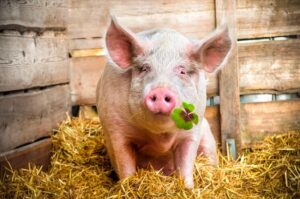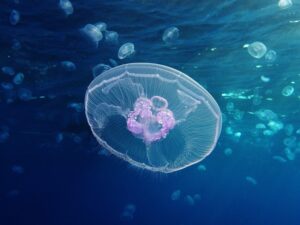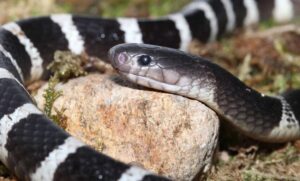With an ugly appearance, fierce face, and sharp teeth, these creatures are startling to behold. The website animaloverse.com “names” 12 of the Creepiest Creatures on Earth with their own unique characteristics. Join KnowAllAnimals to explore them in the following article!
1. Top 12 Creepiest Creatures on Earth That Will Give You Chills
Earth is home to countless bizarre creatures, but some make people shudder because of their scary appearance or unusual behavior. In the list below, you will discover the 12 Creepiest Creatures on Earth, species that will give you goosebumps just by looking at them.
1.1. Huntsman Spider
- Kingdom: Animalia
- Phylum: Arthropoda
- Subphylum: Chelicerata
- Class: Arachnida
- Order: Araneae
- Infraorder: Araneomorphae
- Family: Sparassidae
The Huntsman Spider is found across Australia, Africa, Asia, the Americas, and the Mediterranean. They can grow up to 12cm (4.7 inches) in size, with an impressive leg span that extends up to 27cm (10.6 inches). Unlike many spider species, the huntsman spider does not use a web to trap prey. Instead, it uses its body to attack when it encounters a suitable target.
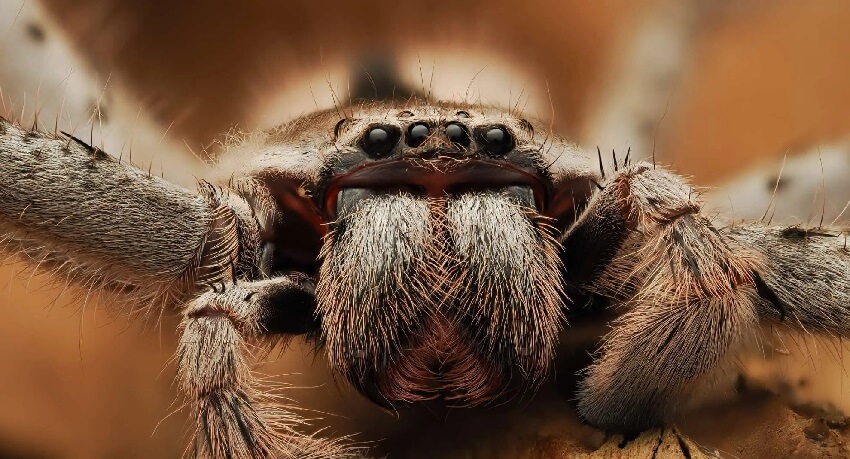
1.2. Goblin Shark
- Kingdom: Animalia
- Phylum: Chordata
- Class: Chondrichthyes
- Subclass: Elasmobranchii
- Division: Selachii
- Order: Lamniformes
- Family: Mitsukurinidae
- Genus: Mitsukurina
- Species: M. owstoni
The Goblin Shark (Mitsukurina owstoni) is a rare species, sometimes called a “living fossil,” and is the only remaining representative of the family Mitsukurinidae, a lineage of fish that is about 125 million years old. This species has pink skin and a distinctive appearance, with a long, flattened snout and a protruding jaw with claw-like teeth. Goblin sharks typically grow to be 3m to 4m (10 to 13 ft) long as adults, and they live on the continental slopes, submarine canyons, and seamounts around the world at depths of more than 100m (330 ft).
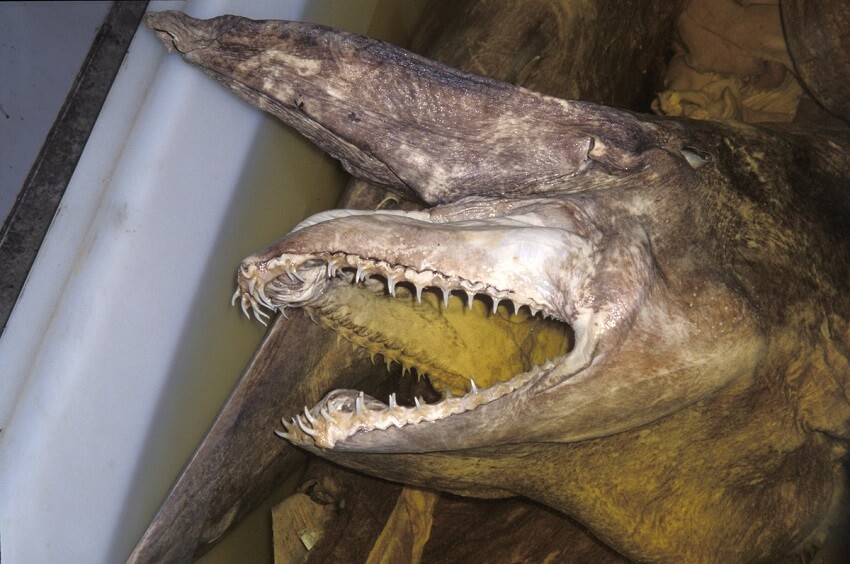
1.3. Promachoteuthis Sulcus Squid
- Kingdom: Animalia
- Phylum: Mollusca
- Class: Cephalopoda
- Order: Oegopsida
- Family: Promachoteuthidae
- Genus: Promachoteuthis
- Species: P. sulcus
The Promachoteuthis Sulcus Squid, a rare species, typically lives in the icy depths of the Antarctic. This creature is small, only about 25cm (10 inches) long, but it has a round, human-like mouth with several rows of sharp teeth. This is a unique feature that distinguishes it from other squid species.
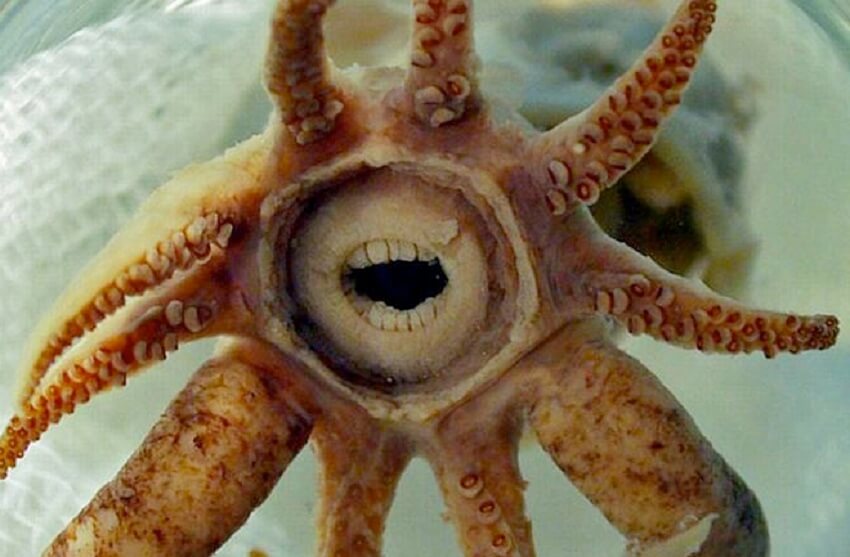
1.4. Atlantic Wolfish
- Kingdom: Animalia
- Phylum: Chordata
- Class: Actinopterygii
- Order: Perciformes
- Family: Anarhichadidae
- Genus: Anarhichas
- Species: A. lupus
The Atlantic Wolfish is a close relative of the catfish that lives in the North Atlantic. Their bodies contain a natural antifreeze that allows their blood to continue flowing in extremely cold environments.
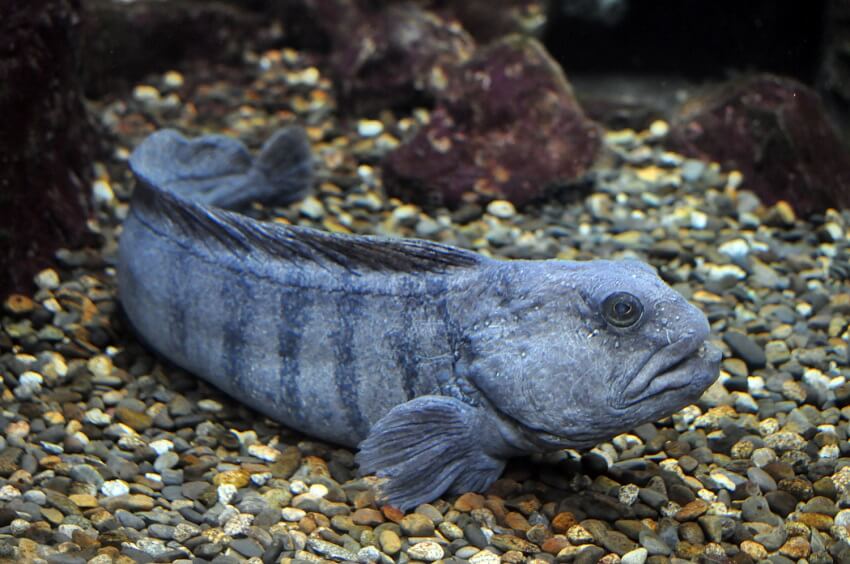
1.5. Star-Nosed Mole
- Kingdom: Animalia
- Phylum: Chordata
- Class: Mammalia
- Order: Eulipotyphla
- Family: Talpidae
- Genus: Condylura
- Species: C. cristata
The Star-Nosed Mole lives primarily in the wet lowlands of North America. This species is known for being a skilled swimmer and for its ability to hunt underwater. They are omnivores, eating everything from insects and worms to mollusks and small fish. They are also the fastest eaters in the world, able to grab and consume food in less than a quarter of a second.
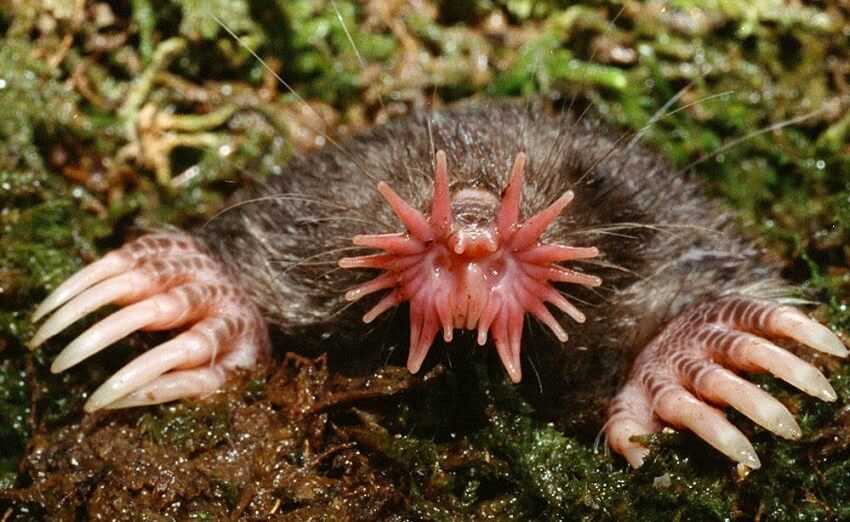
1.6. Pacific Lamprey
- Kingdom: Animalia
- Phylum: Chordata
- Infraphylum: Agnatha
- Superclass: Cyclostomi
- Class: Petromyzontida
- Order: Petromyzontiformes
- Family: Petromyzontidae
- Genus: Entosphenus
- Species: E. tridentatus
The Pacific Lamprey is native to the Pacific Ocean, particularly from Alaska to California. This saltwater fish has a monstrous appearance with a suction-cup mouth it uses to attach to a host fish. They are likened to “vampires” because they feed by sucking the blood and body fluids of their hosts.
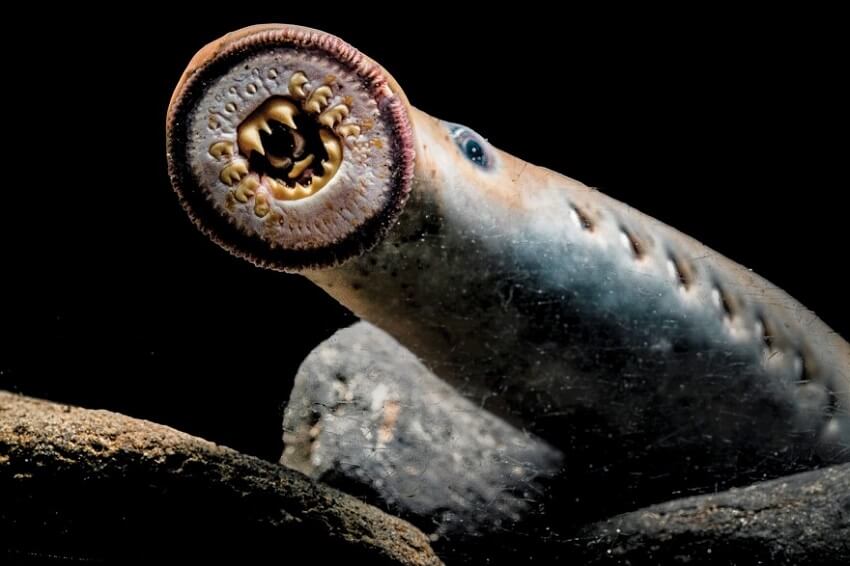
1.7. Naked Mole-Rat
- Kingdom: Animalia
- Phylum: Chordata
- Class: Mammalia
- Order: Rodentia
- Parvorder: Phiomorpha
- Family: Heterocephalidae Landry, 1957
- Genus: Heterocephalus Rüppell, 1842
- Species: H. glaber
These wrinkly, hairless creatures, measuring 8–10cm (3-4 inches) long, burrow under the deserts of East Africa. They are immune to cancer and can live for up to 30 years, an incredible age for a rodent. They live in colonies of up to 300 in a complex and extensive tunnel system.
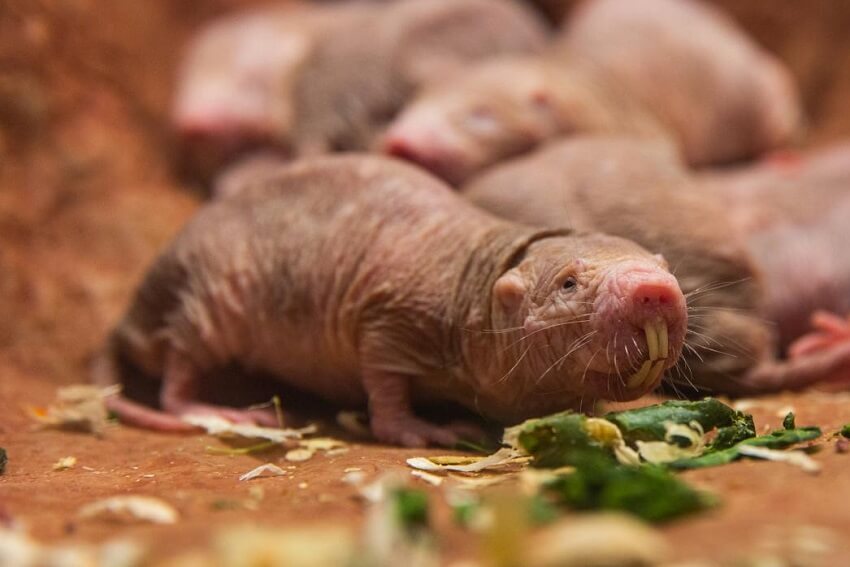
1.8. Hairy Frog
- Kingdom: Animalia
- Phylum: Chordata
- Class: Amphibia
- Order: Anura
- Family: Arthroleptidae
- Subfamily: Astylosterninae
- Genus: Trichobatrachus Boulenger, 1900
- Species: T. robustus
This frightening-looking creature lives in Central Africa. It is an omnivore, eating insects, small creatures, and almost anything it can swallow.
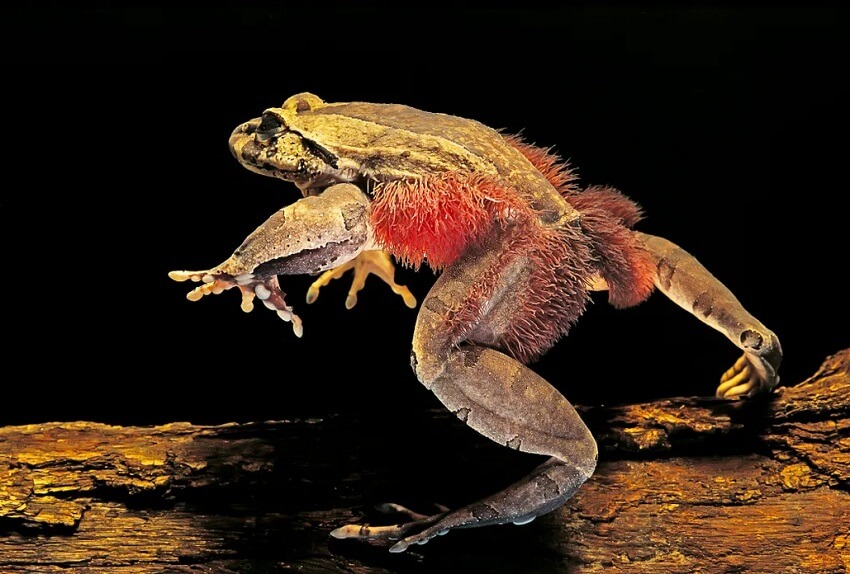
1.9. Whip Spider
- Kingdom: Animalia
- Phylum: Arthropoda
- Subphylum: Chelicerata
- Class: Arachnida
- Clade: Tetrapulmonata
- Order: Amblypygi Thorell, 1883
The whip spider primarily eats insects and is not dangerous to humans. They spin webs in warm areas, often in caves.
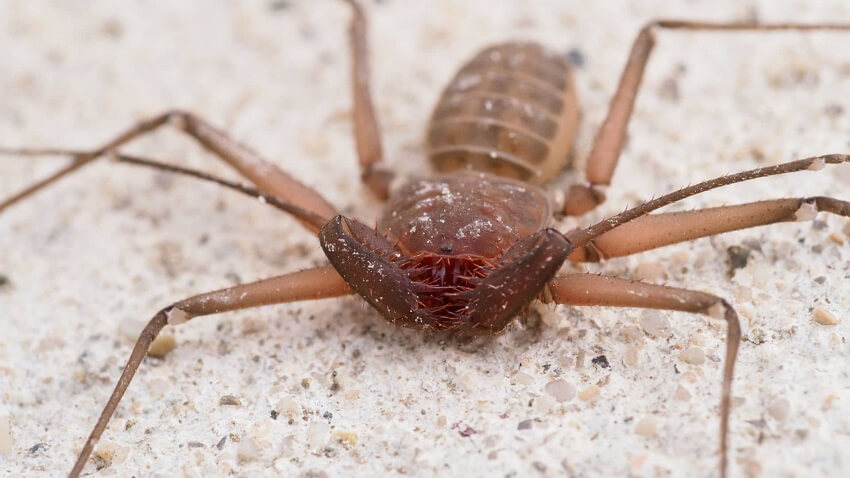
1.10. Frilled-Neck Lizard
- Kingdom: Animalia
- Phylum: Chordata
- Class: Reptilia
- Order: Squamata
- Suborder: Iguania
- Family: Agamidae
- Subfamily: Amphibolurinae
- Genus: Chlamydosaurus Gray, 1825
- Species: C. kingii
The frilled-neck lizard lives in Northern Australia and Southern New Guinea. They love to eat insects such as cicadas. This intimidating-looking creature has a large frill of skin around its neck that folds up. When threatened, they open their mouths wide and expand their bright yellow or orange frills to scare off predators. If that doesn’t work, they will lash their tails and hiss ferociously.
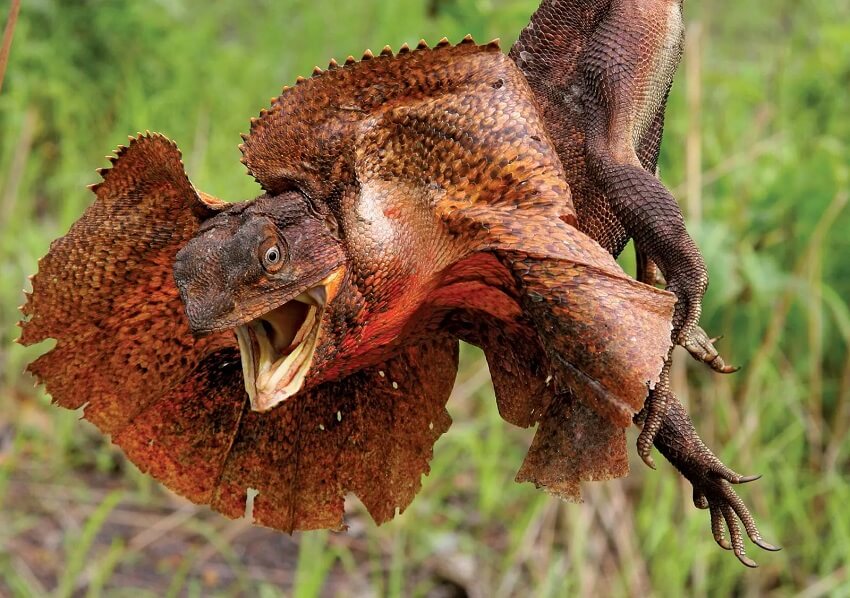
1.11. Queensland Tube-Nosed Bat
- Kingdom: Animalia
- Phylum: Chordata
- Class: Mammalia
- Order: Chiroptera
- Family: Pteropodidae
- Genus: Nyctimene
- Species: N. robinsoni
The Queensland tube-nosed bat is a unique species native to the tropical rainforests of Australia and is harmless to humans. They primarily eat fruit and are essential for seed dispersal and the regeneration of the rainforest.
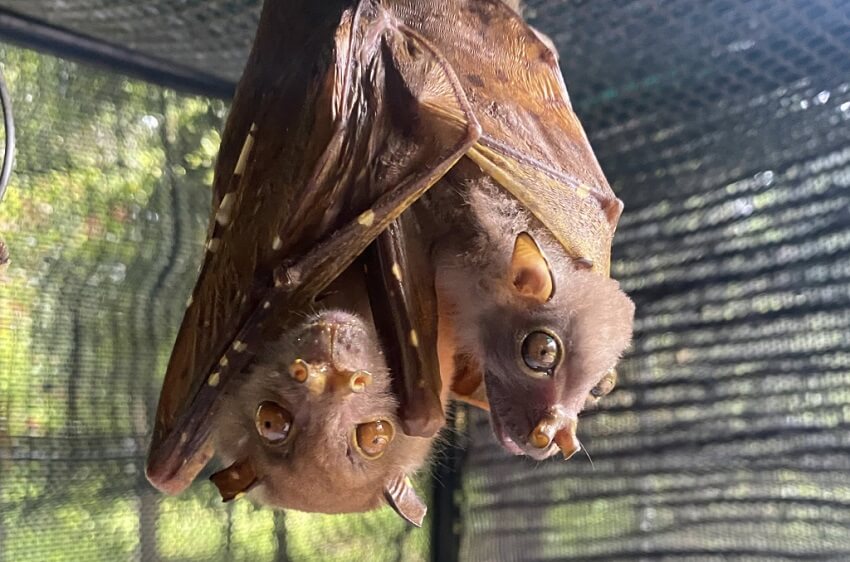
1.12. Northern Stargazer
- Kingdom: Animalia
- Phylum: Chordata
- Class: Actinopterygii
- Order: Labriformes
- Family: Uranoscopidae
- Genus: Astroscopus
- Species: A. guttatus
Native to the Atlantic Ocean, the Northern Stargazer, or Atlantic stargazer, buries itself in the sand and surprises its prey with its upward-facing eyes. They primarily eat smaller fish and crustaceans. They can generate an electric shock to both hunt and defend themselves. Reaching a length of 56cm (22 inches), they are among the scariest-looking species with their flattened bodies and strange shaped heads.
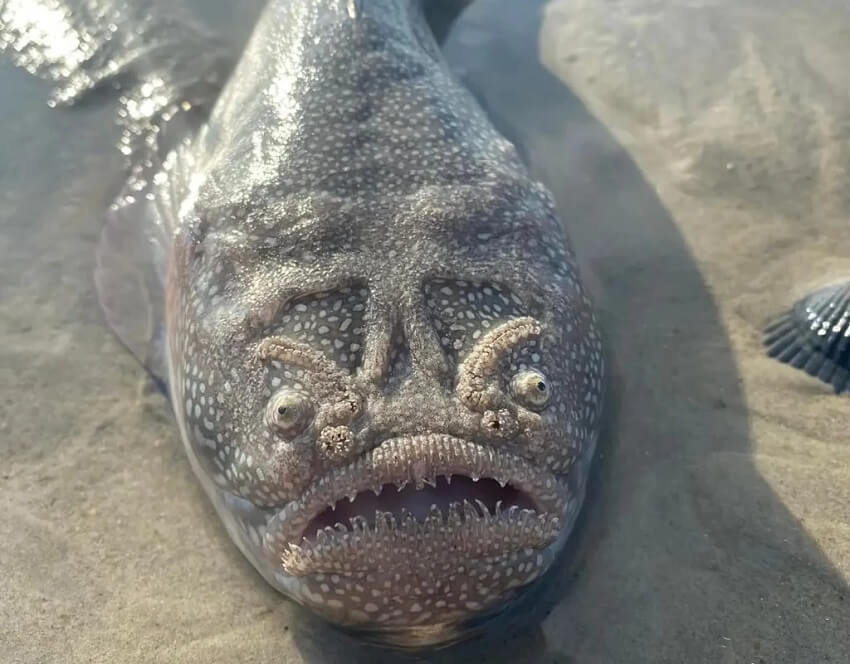
2. FAQs – Creatures That Will Startle You
1. Which creature on the list is the largest in size?
The huntsman spider is the largest animal mentioned, its body can be up to 12 cm long, and its leg span can reach up to 27 cm.
2. What features make the goblin shark look so “startling”?
The Goblin Shark has a protruding jaw, a unique long, flat snout, and an appearance that’s just like a living fossil; it has remained virtually unchanged for about 125 million years.
3. What is special about the Promachoteuthis Sulcus squid?
This squid lives in the deep waters of the Antarctic and is about 25 cm long. It’s known for its unique, human-like mouth with multiple rows of sharp teeth, a feature that makes it both bizarre and frightening.
4. Where does the naked mole-rat live, and what characteristics make it “startling”?
The naked mole-rat burrows underground in a tunnel system in the deserts of East Africa. It is hairless, has a wrinkled body, tiny eyes, and a long lifespan (up to 30 years). Its naked body makes it look very strange to many people.
5. What strategy does the frilled-neck lizard use to intimidate predators?
When in danger, the frilled-neck lizard opens its mouth wide and expands its fan-like frill of skin, which is bright yellow or orange. At the same time, it hisses and lashes its tail to intimidate predators.
3. Conclusion
The creatures on the list of the Top 12 Creepiest Creatures on Earth are startling not only because of their bizarre appearances and frightening behaviors but also because they reveal amazing stories of evolution and adaptation. They are proof that nature is full of surprises, beautifully strange, terrifying, and always mysterious. Understanding them not only helps us overcome our fear but also gives us a greater respect for Earth’s biodiversity.

